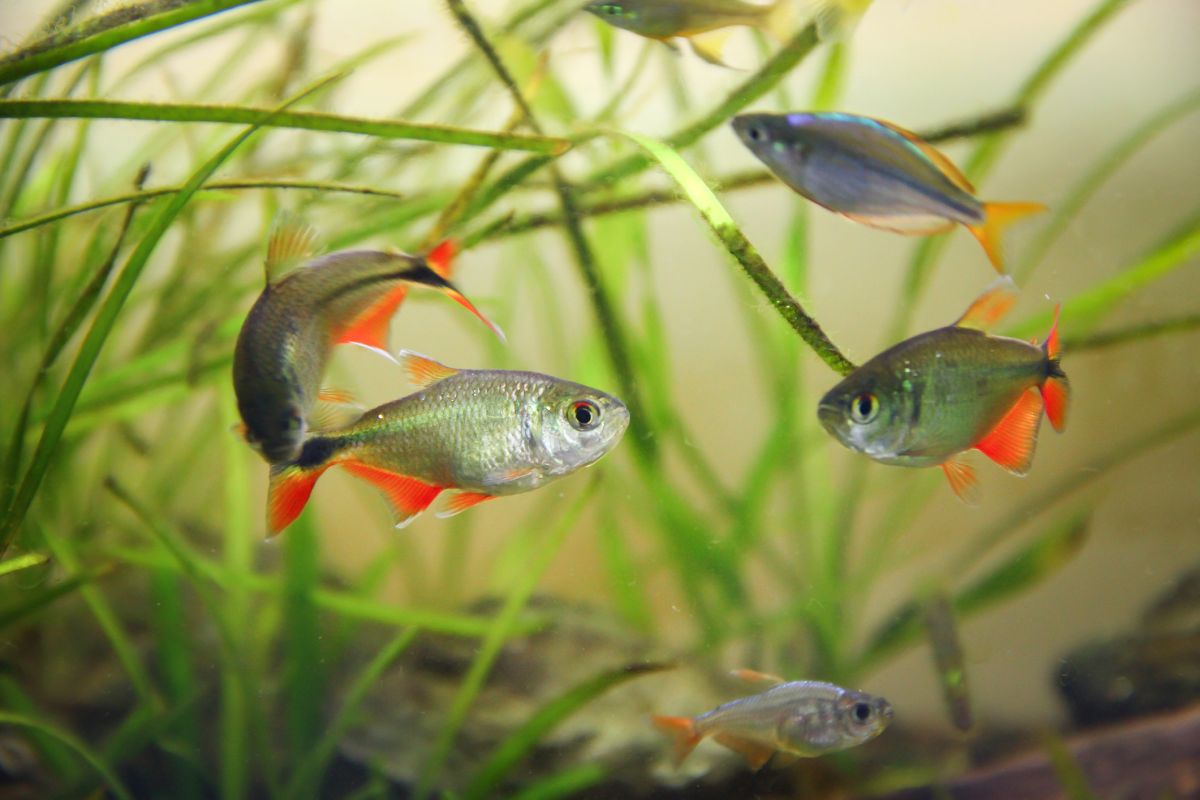Blood Parrot Cichlid
The Blood Parrot Cichlid is a unique, hybrid freshwater fish beloved for its vibrant appearance and playful personality. While it does not occur naturally in the wild, it was first bred in Taiwan in 1986. The parent species are thought to include the Redhead Cichlid (Paraneetroplus synspilus) and Midas Cichlid (Amphilophus citrinellus), though the exact lineage remains uncertain. Despite controversy surrounding its hybrid origins, this fish has gained popularity for its beauty and sociable nature.
Lifespan
- Typical Lifespan: 10 to 15 years
The lifespan of a Blood Parrot Cichlid depends on proper care and breeding practices. Avoid specimens that have been artificially modified or dyed, as these practices can shorten their lives. Opt for fish from reputable breeders to ensure optimal health.
Appearance
Blood Parrot Cichlids are known for their round bodies, vibrant colors, and distinctive facial features:
- Body Shape: Large, rounded bodies with prominent nuchal humps and smaller, rounded heads.
- Mouth: A beak-like mouth that often cannot fully close, but they have throat teeth for processing food.
- Colors: Predominantly bright orange, though red, yellow, gray, and multi-colored variations (with white or yellow patches) exist. Avoid exotic-colored fish, as these are often artificially dyed.
- Size:
- Males: Up to 8 inches
- Females: 6–7 inches
- Rarely, individuals may grow to 10 inches.
Care Level
Intermediate
While resilient in many ways, Blood Parrot Cichlids require specific conditions and monitoring of their genetic limitations (e.g., swim bladder deformities and mouth functionality).
Tank Requirements
- Minimum Tank Size: 30 gallons for a single fish; add 10 gallons for each additional cichlid.
- Water Parameters:
- Temperature: 76°F to 80°F
- pH: 6.5 to 7.4
- Hardness: 6 to 18 dGH
- Substrate: Fine sand to prevent injuries while digging.
- Decor: Include plenty of hiding spots using driftwood, rock caves, or plant pots. Balance hiding spaces with open swimming areas.
- Plants: Hardy plants like Java Fern, Anubias, or Hornwort.
- Lighting: Subdued or red-spectrum lighting is preferred.
- Filtration: A high-volume filter (e.g., Fluval FX4) is essential due to their waste production. Perform weekly water changes (25-50%) to maintain stable conditions.
Behavior & Temperament
Blood Parrot Cichlids are semi-aggressive but thrive in peaceful, well-maintained environments:
- Activity Level: Moderately active, spending time exploring, hiding, and occasionally digging.
- Social Nature: Best kept in groups or with compatible tank mates to reduce stress.
- Aggression: Limited aggression unless housed with incompatible or overly aggressive fish, or if the tank is overcrowded.
Tank Mates
Blood Parrot Cichlids are versatile community fish when housed with peaceful companions of similar size:
- Best Tank Mates:
- Other Blood Parrot Cichlids
- Yoyo Loaches
- Emperor Tetras
- Honey and Dwarf Gouramis
- Silver Dollar Fish
- Firemouth Cichlids
- Plecos (e.g., Clown Pleco)
- Bala Sharks
- Kribensis Cichlids
- Tiger Barbs (caution: ensure the environment discourages fin nipping).
- Avoid: Small invertebrates or fish that can be mistaken for food.
Feeding
Blood Parrot Cichlids are omnivorous and require a balanced diet:
- Staple Diet: Sinking Cichlid pellets designed for larger fish.
- Protein Sources: Treat with brine shrimp or bloodworms 2–3 times weekly.
- Vegetables: Cooked peas and other vegetables can aid digestion.
- Feeding Tips:
- Feed twice daily in small portions they can consume within 2–3 minutes.
- Remove uneaten food promptly to maintain water quality.
Common Health Issues
- Ich: Marked by white spots on the body; treat with over-the-counter medications or heat/salinity adjustments. Prevent by maintaining water quality.
- Swim Bladder Disease: Affects buoyancy, often due to genetic deformities. Treatable in some cases, but may become a lifelong condition for affected fish.
Breeding
Breeding Blood Parrot Cichlids in captivity is rare:
- Male Fertility: Most males are infertile.
- Egg-Laying: Females may lay eggs on smooth surfaces, but these often fail to develop.
- Hybridization: Breeding with other Cichlid species is possible but discouraged, as it results in further hybrids.
Summary
Blood Parrot Cichlids are a captivating addition to any aquarium, offering a mix of unique appearance and engaging behavior. While their hybrid origins come with certain challenges, proper care ensures they can live long, healthy lives. With a balanced diet, clean environment, and suitable tank mates, these fish can thrive and bring vibrant energy to your aquatic community.




Reviews
There are no reviews yet.